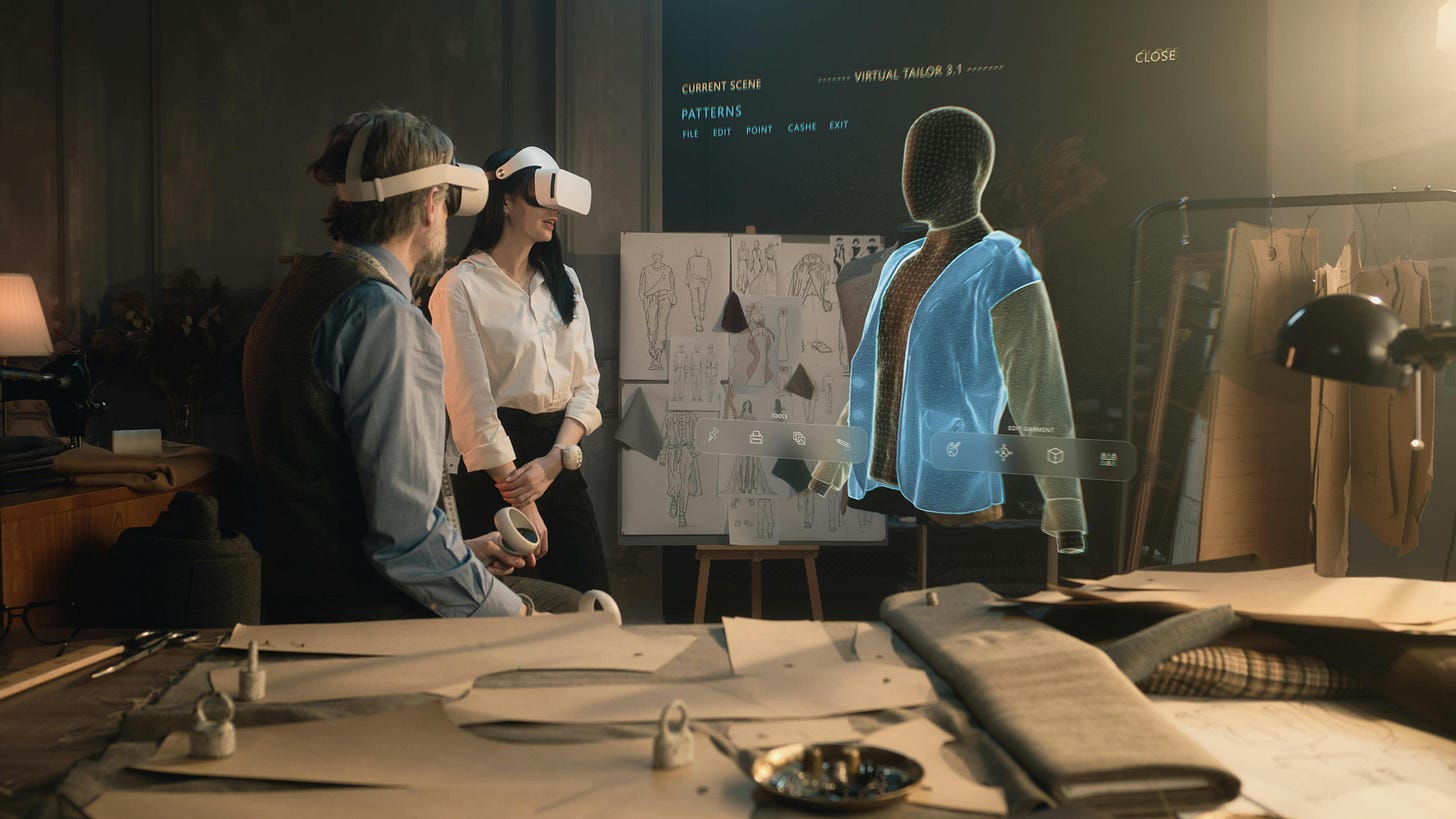REPOST Tech-Driven Trends: How AI is Enhancing Performance in the Fashion Industry
From creative industries like fashion to corporate e-learning, AI tools are now essential for improving efficiency, creativity, and decision-making.
In recent years, artificial intelligence (AI) has moved from a buzzword to a powerful driver of innovation across various sectors. From creative industries like fashion to corporate e-learning, AI tools are now essential for improving efficiency, creativity, and decision-making. As technology evolves, applications like Perplexity AI, DALL-E, MicroDoing, or software like Luxurynsight are blending artificial intelligence with fashion expertise for predictive analytics on trendsleading the charge. Let's explore how these tools are transforming industries and empowering users to work smarter!
by Sofi Alurrade of Lofficiel
Perplexity AI: The Research Assistant You’ve Always Wanted
In a world of information overload, finding reliable and precise information quickly can be challenging. This is where Perplexity AI comes in—a research-focused assistant designed to streamline information gathering and synthesis. Using advanced natural language processing, Perplexity AI not only searches the web but distills relevant insights, saving users from hours of manual reading and helping them make informed decisions.
For fashion professionals, staying updated on trends, consumer behavior, and sustainability practices is critical. Perplexity AI can help fashion designers and marketers quickly access credible insights on market shifts or emerging trends, enabling them to stay ahead in a competitive landscape. With Perplexity’s ability to filter through complex data, fashion brands can refine their strategies based on real-time analysis, leading to more responsive and data-driven decision-making.
DALL-E & Midjourney: Unleash Your Visual Creativity
Generative AI platforms like DALL-E and Midjourney have changed the game for visual content creation. With these tools, users can generate high-quality images simply by describing what they want. From prototyping fashion collections to designing marketing visuals, DALL-E’s ability to interpret text and create stunning visuals removes the barrier of technical skills, empowering creatives and business owners alike.
DALL-E and Midjourney enable rapid ideation and visual exploration, for example a graphic designer can quickly generate mood boards, mock-ups, or color palette variations, allowing them to visualize concepts before bringing them to life physically. By accelerating the design process, AI-powered imagery can keep brands agile and responsive to evolving trends.
MicroDoing: Personalized Skill Development in Real-Time Work Settings
Traditional training often lacks the practical application necessary to make skills stick. MicroDoing, an on-the-job skill development platform, addresses this by providing targeted micro-actions that integrate learning directly into daily work. This real-time, hands-on approach enables employees to build relevant skills without interrupting workflow.
MicroDoing can help retail staff, designers, and marketers upskill by providing them with practical tasks that enhance their knowledge of current trends, customer engagement strategies, or sustainable practices. By integrating training into their day-to-day responsibilities, fashion professionals can adapt to the latest demands and refine their expertise. But also, for corporate training, MicroDoing’s on-the-job learning model is transformative. Managers can use MicroDoing to train employees on company-specific protocols or new systems without taking them away from their tasks. This platform is particularly useful for companies looking to build competencies organically within their teams, ensuring that skills are not only acquired but immediately applied and retained.
Heuritech: Quantify and predict what real consumers wear around the world
With the largest dataset on fashion and the most accurate forecast, Heuritech help companies manage their collections to produce only what the consumer desires. They have developed a unique method enabling them to forecast emerging and established trends which will soon be adopted in the market as fashion trends.
Their forecasting toolkit uses a master algorithm that optimizes 5 forecasting algorithms through combining them, which enables them to provide a detailed trendline with a 90% forecast accuracy.
For example the Top Trends of 2025 thanks to their analyze are:
Boho Chic In Suede, Shades of Yellow, Hot Pants, Aquatic Influences, Cute Sportswear, The Feminine Polo Shirt, Animal Print, Thong Sandals, Strapless dress, All about Asymmetry.
Luxurynsight: AI’s Footprint in Luxury, a growing selective adoption
Analytical AI, introduced about five years ago and pioneered by Luxurynsight, has seen selective use across luxury. In terms of global pricing optimization, the software Luxurynsight’s AI-driven pricing platform LY Price, developed over five years of tracking global price evolution, helps brands dynamically adjust prices in response to currency fluctuations, a move crucial for safeguarding profit margins in volatile markets. Early adopters of the algorithm have been able to pass on FX change rate evolution on their prices twice as fast as their competitors, resulting in millions of euros of bottom-line impact.
Their capability to also analyze pricing and sales on the secondhand market (monitoring 300K+ product listing per month) helps brands to better understand desirability and emerging trends (trending colors, shapes, etc...) and adapt their pricing and assortment accordingly.
Prodify, a software platform with strong AI integration and a focus on data security, could be highly relevant to fashion businesses and other industries.
Fashion brands often handle sensitive customer data, from payment information to shopping habits. Prodify places a high priority on data security, providing a secure, closed ecosystem that protects proprietary information and customer privacy. This helps fashion brands maintain trust with consumers and ensures compliance with data protection regulations, which is essential in today’s regulatory environment.
Prodify secure ecosystem ensures that AI solutions meet regulatory standards, which is critical for fashion brands that value transparency and ethical practices in handling customer data.
AI’s transformative power is evident across industries, but its impact on fashion and corporate e-learning is particularly significant. In fashion, AI tools not only streamline design and marketing, but also open new avenues for personalization and sustainability. For instance, using AI-driven data analysis, brands can better predict trends and create collections that align with consumer preferences, reducing waste and supporting sustainable practices.






